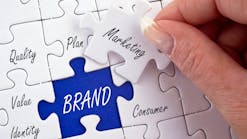Navigating the Transition from HVAC Technician to Business Owner
Many contractor-owners in the HVAC industry today started their careers as technicians, just like me. We worked in the field, gaining expertise through hands-on work and problem-solving. We had a good understanding of the day-to-day operations, but deep down, we knew there was more to explore and achieve beyond being a technician.
For me, everything changed in 2007 when I attended an ACCA conference. Little did I know that this event would completely shift my perspective on business operations, strategy, and growth. It was a turning point that opened my eyes to the operational deficiencies in our family-owned HVAC business.
During the conference, I found myself engaged in discussions about budgeting, pricing, marketing, and strategic goal setting. These conversations revealed the stark reality that our business lacked the structured frameworks and clear performance metrics necessary for true success. It was a wake-up call that prompted a crucial conversation with my father, who was the CEO at that time.
Tradition and Change
When I approached my father with the idea of a strategic overhaul, I encountered a mix of surprise and curiosity. Having taken over the business from my grandfather, my father had a deep attachment to the traditional ways of doing things. He had successfully guided the company's growth based on his experience and intuition, and understandably, he was initially hesitant about making significant changes.
However, as I shared what I had learned, my father began to see the potential benefits of a strategic overhaul.
It's not uncommon for family businesses to face the challenge of balancing tradition with innovation. The weight of history and the emotional ties can make it difficult to embrace change. Yet, as times change and industries evolve, it becomes crucial for family businesses to adapt and stay competitive.
In proposing a strategic overhaul, I recognized the importance of preserving our family's legacy while also ensuring the long-term success and sustainability of the business. I conveyed my deep respect for the foundation laid by my grandfather and my father's invaluable contributions.
I assured my father that the proposed changes were not meant to undermine our heritage but rather to build upon it and secure a prosperous future.
Together, we embarked on a journey of transformation, honoring the wisdom of the past while embracing new strategies for growth. It was a delicate balance, requiring open communication, mutual respect, and a shared vision for the future. We found strength in our shared commitment to the success of our family business and the opportunities it could provide for generations to come.
Open Dialogue and Common Ground
By fostering open dialogue and seeking common ground, family businesses can navigate the complexities of change and ensure a prosperous future while preserving their unique legacies.
Luckily, my father was open-minded and recognized the importance of adapting to changing times. He listened attentively as I presented my observations and the insights I gained from the ACCA conference. We discussed the need for structured frameworks, clear performance metrics, and contemporary business strategies to drive measurable success and sustainable growth.
At first, he had reservations about departing from established practices that had served us well thus far. He was concerned about potential risks and uncertainties that a strategic overhaul could bring. After all, change often comes with a degree of discomfort and resistance.
But as our conversation progressed, I could see a shift in his perspective. He began to see the merits of my arguments. Together, we discussed the challenges we were currently facing, the opportunities we were missing out on, and the long-term vision we had for the company.
Ultimately, my father embraced the idea of a strategic overhaul. It was a gradual process.
Looking back, I am grateful for my father's willingness to listen and consider new ideas. His support and collaboration were crucial in implementing the changes that propelled our business forward. Today, we both take pride in the thriving company we built together, and our relationship has only grown stronger through this shared experience.
Change is Hard
Our strategic overhaul was even more daunting because I realized that I also needed to change. I needed to move away from being a technician with a problem-solving mindset toward someone with a wider view, I wanted to own and run my family business and it required having a more broad-vision perspective. I was determined to figure it out.
To integrate what I learned from the ACCA conference required re-evaluating our company’s existing practices.
As we began this process, I discovered an organization called The Alternative Board (TAB), a community of CEOs and business owners dedicated to mutual support. TAB provided me with a platform for collaborative problem-solving sessions, where members shared challenges and brainstormed solutions. This experience highlighted the value of peer insights and the power of collective wisdom. Through TAB, I realized that my challenges were not unique.
Leadership
One of the earliest lessons was that to transition to business owner was not just about adopting new strategies; it was about evolving into a leadership role that demanded a balance between technical expertise and strategic vision.
I learned this required a deep understanding of the industry and the ability to anticipate and navigate its complexities.
Here are some specific examples.
• Financial Management: As a business owner, I had to develop a strong understanding of financial management. This included budgeting, forecasting, tracking expenses, managing cash flow, and making informed financial decisions. Financial management also means balancing investments in equipment, inventory, and employee wages while ensuring profitability. This is NOT easy.
• Human Resources: Managing a team of technicians and support staff required me to shift my mindset. I had to learn how to recruit, train, and retain talented individuals who aligned with our company's values and goals. Additionally, handling employee relations, performance evaluations, and fostering a positive work culture became crucial aspects of my job.
• Marketing and Branding: Developing effective marketing strategies to promote our business and stand out in a competitive market was a complex undertaking. I had to learn about and understand target demographics, identify unique selling points, create compelling messaging, and leverage various marketing channels to reach potential customers. Building a strong brand identity and reputation is a continuous effort.
• Sales and Customer Relations: Transitioning from a technician to a business owner meant taking on a sales role. I had to learn how to communicate the value of our services, negotiate contracts, and build long-term relationships with clients. I had to learn to prioritize exceptional customer service by addressing any concerns or issues that arose.
• Strategic Planning: Then I had to learn to think long-term and develop a clear vision for the business. This involved setting goals, creating actionable plans, and adapting strategies to changing market dynamics. Keeping up with industry trends and technological advancements was vital to stay ahead of the competition.
• Regulatory Compliance: Navigating the complex landscape of regulatory requirements and compliance standards in the HVAC industry is a significant challenge. Staying informed about licensing, permits, safety regulations, environmental guidelines, and other legal obligations requires continuous education and attention to detail.
• Business Development: Identifying growth opportunities, exploring new markets, and expanding our service offerings is also an ongoing process. This involved conducting market research, assessing the feasibility of new ventures, and developing strategic partnerships to fuel business growth.
These are just a few examples of the complexities I encountered during my transition from a technician to a business owner.
I had to put myself into situations of continuous learning, be open to external insights, and engage with a supportive community of peers. It wasn’t easy. But it played an instrumental role in my transformation. They provided me with the tools and perspectives necessary to steer the business toward sustainable growth and innovation.
Continuous Education is Vital
ACCA and TAB were pivotal in shaping my approach to business leadership. We became involved with one of the ACCA Mix Groups. This member benefit provided our business with contractor-to-contractor networking which offered invaluable insights into the HVAC industry. Finally, I could take that deep dive into the specific challenges and opportunities within our field.
TAB provided a broader, industry-independent platform, bringing together business leaders from various sectors. This diversity of perspectives was incredibly enriching, revealing that many of the challenges I faced were not confined to our industry but were part of a larger business landscape.
Ultimately, the greatest lesson I learned is that the path from HVAC technician to business owner is one of continuous education and evolution. I had to be willing to learn, adapt, and embrace new perspectives. The operational overhaul that began with insights from the ACCA conference and was further improved by the collaborative experiences with TAB set a new benchmark for our business.
For those HVAC technicians who wish to transition from technical roles to leadership positions, be aware that this path is both challenging and rewarding. Embrace the path of continuous learning and be open to insights from diverse sources. The value of a supportive peer community cannot be overstated; it is a source of wisdom, inspiration, and practical solutions.
Throughout this transition, I learned the importance of being adaptable, open to new ideas, and willing to step outside of my comfort zone.
If you are on a similar journey, I encourage you to embrace the challenges, seek out learning opportunities, and connect with others who can provide guidance and support. Remember that the transition from a technician to a business owner is a process, and with dedication, perseverance, and a growth mindset, you can navigate this path and achieve your goals.
Rob Minnick joined National Comfort Institute (NCI) in 2023 as part of the trainer/instructor team. He has 43 years of experience in the HVAC industry, in particular, with mechanical design and building performance. He holds a number of national certifications and is active in many HVAC Industry associations. You can reach Rob with any questions at ncilink.com/ContactMe.









